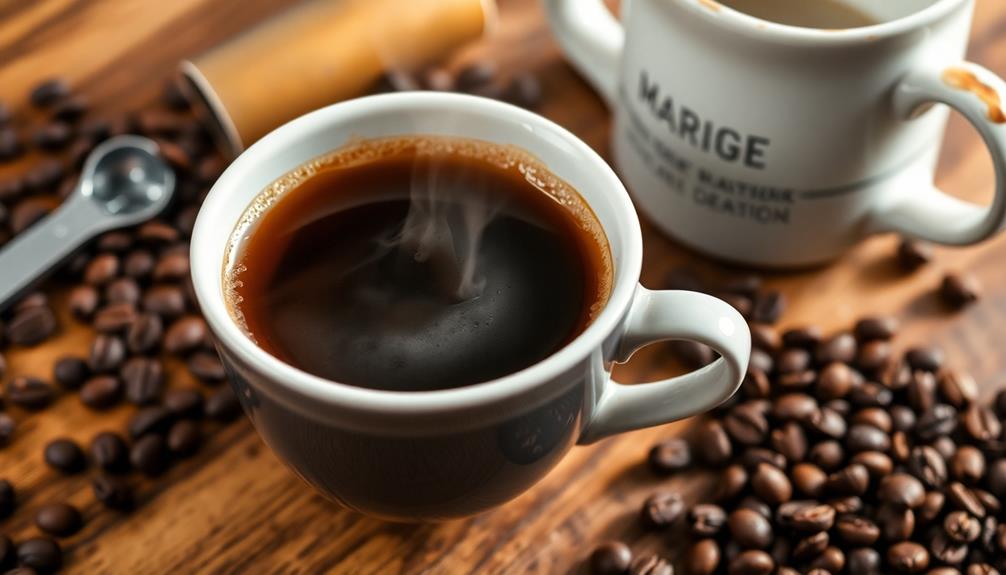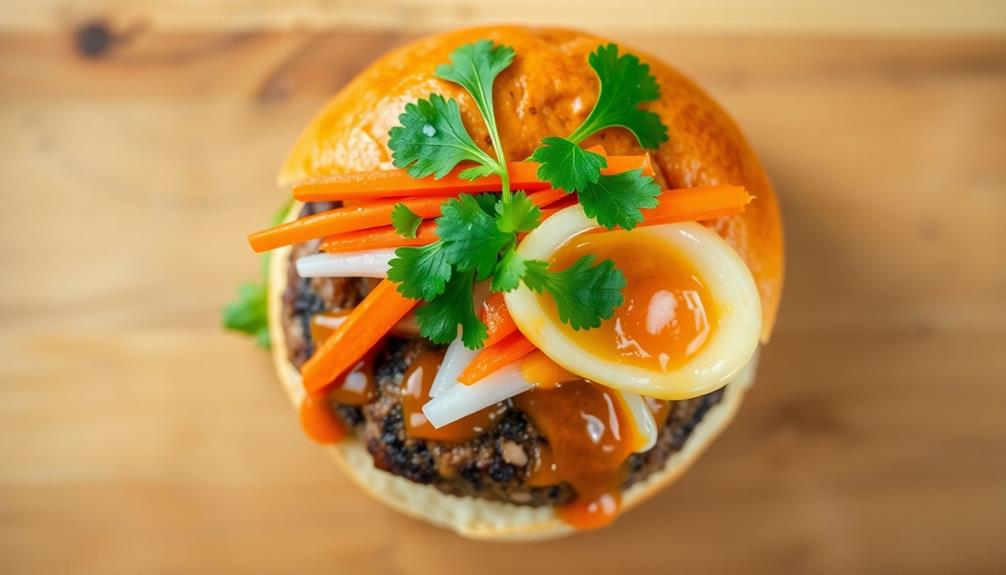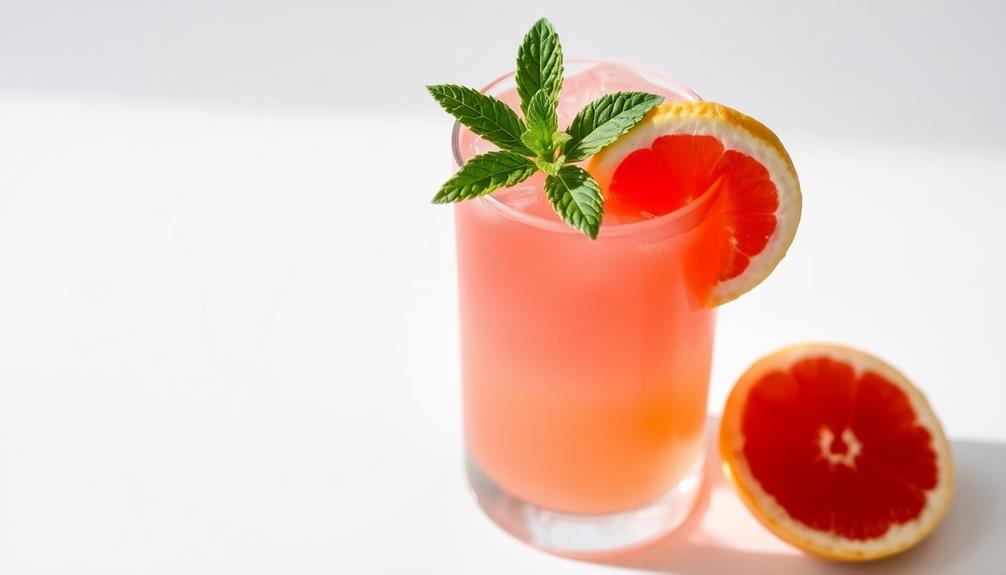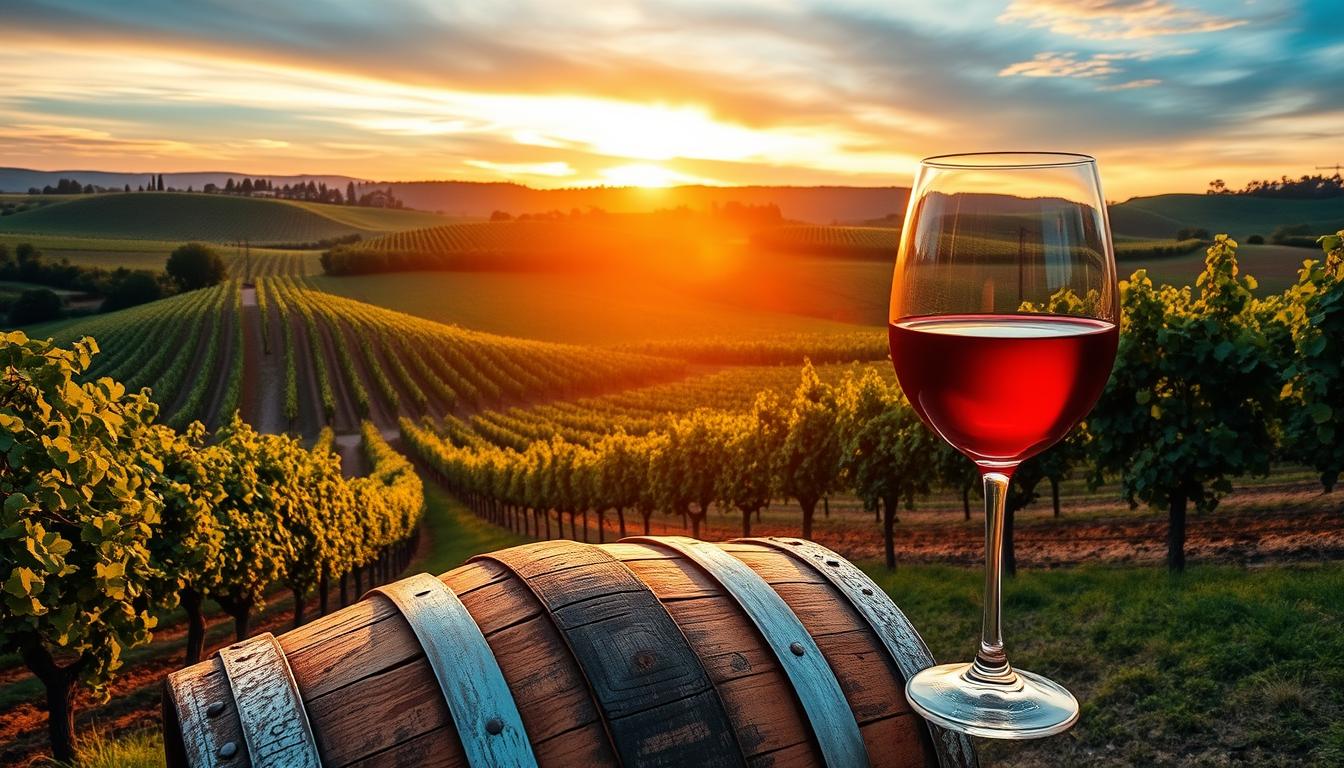Craft coffee takes you on a delightful journey, from the rich aromas of freshly-roasted beans to the perfect cup brewed just for you. This age-old tradition traces back to Ethiopia, then spread across the Arab world and into Europe. Today's craft coffee movement celebrates quality, sustainability, and artistry. You'll discover unique flavors influenced by the bean's origins, as well as roasting and brewing techniques that unlock its full potential. Experiment with different bean varieties, roast levels, and brewing methods to find your personal favorites. Each sip reveals new dimensions of taste, inviting you to explore the wonders of craft coffee further.
Key Takeaways
- The craft coffee movement emphasizes quality, sustainability, and artistry in sourcing, roasting, and brewing high-quality beans for unique flavor profiles.
- Proper bean selection, roasting techniques, and brewing methods are crucial for extracting the optimal flavors and aroma from freshly-ground coffee.
- Different brewing methods like drip, French press, and pour-over offer distinct experiences, requiring adjustments in grind size, water temperature, and brew time.
- Flavor profiles in craft coffee can include a range of notes, from fruity and nutty to chocolatey, with varying levels of acidity and body.
- The craft coffee culture fosters a sense of community and appreciation for the art and skills involved in creating the perfect cup of coffee.
History
The origins of craft coffee can be traced back to the 15th century, when coffee beans were first discovered in the highlands of Ethiopia.
These precious beans quickly spread across the Arab world and eventually made their way to Europe. Coffee houses popped up in major cities, becoming hubs of social activity and intellectual discourse.
Over the centuries, coffee cultivation expanded to other tropical regions, with each area developing its own unique flavors.
As coffee grew in popularity, new techniques for roasting, grinding, and brewing emerged. Coffee connoisseurs began to appreciate the nuances of different beans, origins, and preparation methods.
Today, the craft coffee movement celebrates this rich history, focusing on quality, sustainability, and the art of the perfect cup.
From small-batch roasters to high-tech brewing gadgets, the world of craft coffee invites you to explore, experiment, and savor the flavors of this beloved beverage.
Recipe
Crafting the perfect cup of coffee requires a delicate balance of ingredients and preparation. The art of brewing coffee isn't merely a means to an end, but a journey of discovery, where the subtle nuances of flavor and aroma can transport one to distant lands and awaken the senses.
At the heart of this experience lies the recipe, a carefully curated set of steps that, when followed with precision, can elevate a simple beverage into a sublime elixir.
Let's embark on this journey together and uncover the secrets to crafting the ultimate cup of craft coffee.
Ingredients:
- 2 tablespoons freshly ground coffee
- 6 ounces filtered water
- 1 paper filter
- 1 kettle or saucepan
Instructions:
Bring the filtered water to a gentle simmer in a kettle or saucepan. While the water is heating, place the paper filter in the coffee maker or a pour-over device. Add the freshly ground coffee to the filter, ensuring an even distribution.
Once the water has reached the desired temperature, slowly pour it over the grounds, making sure to saturate the entire surface. Allow the coffee to brew for 4-5 minutes, then serve immediately.
It's important to note that the quality of the coffee beans, the grind size, and the water temperature all play a crucial role in the final flavor profile.
Experiment with different bean origins, roast levels, and brewing techniques to discover your personal preference. Embrace the art of craft coffee and savor each sip as a unique experience.
Cooking Steps
To craft the perfect cup of coffee, start by selecting high-quality beans and grinding them to your desired coarseness.
Next, brew the coffee using your preferred method, carefully adjusting the water temperature and brew time to ensure maximum flavor.
Step 1. Select High-Quality Coffee Beans
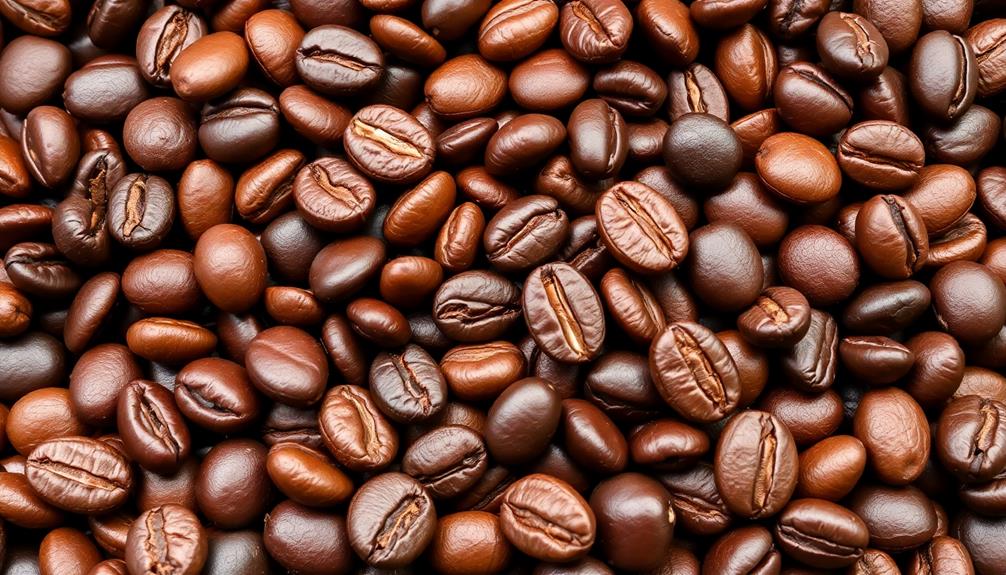
Selecting high-quality coffee beans is the foundation for crafting an exceptional cup of coffee. The journey to the perfect brew begins with choosing the right beans.
Look for beans that are freshly roasted, with a vibrant aroma and rich, complex flavors. Coffee also contains antioxidants that combat oxidative stress, enhancing its health benefits.
Explore different origins, such as the smooth and balanced beans from Central America or the bold, fruity notes of African coffees. Pay attention to the roast level too – light roasts offer brighter acidity, while dark roasts have a deeper, richer taste.
Once you've found the perfect beans, store them properly in an airtight container in a cool, dry place.
Grind them just before brewing to unlock all those delightful aromas. With high-quality beans, you're well on your way to creating a truly remarkable cup of craft coffee!
Step 2. Grind Beans to Desired Coarseness
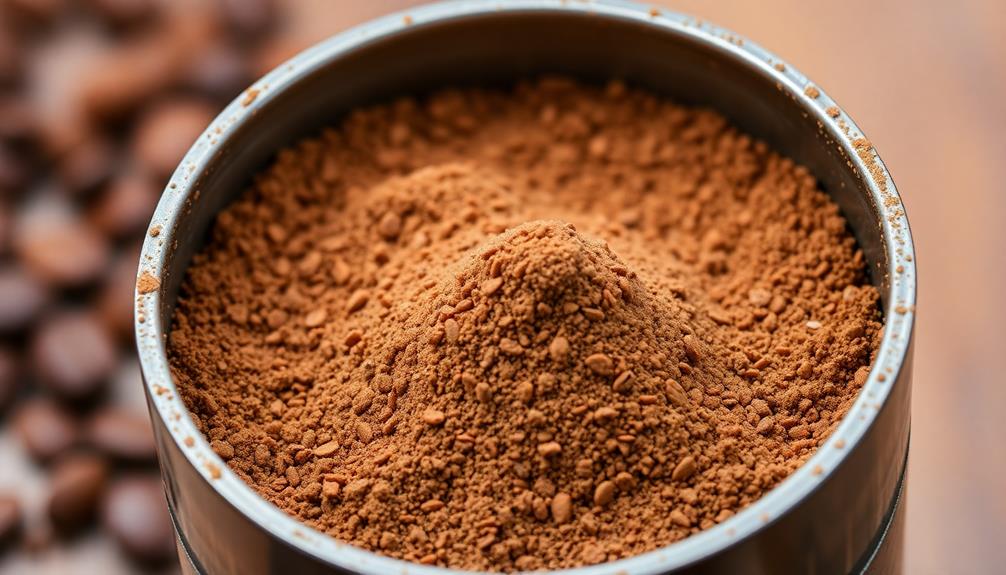
Once you've secured the perfect coffee beans, it's time to grind them to your desired coarseness. This step is crucial, as the grind size can significantly impact the flavor and strength of your brew. Grab your trusty burr grinder and get ready to unlock the full potential of those premium beans!
Whether you prefer a bold, full-bodied cup or a smooth, delicate sip, the right grind size is key. For a French press, go for a coarse grind, allowing the robust flavors to shine. For a pour-over, aim for a medium grind that will produce a balanced, nuanced taste. And for an espresso, you'll want a fine grind to create that thick, intense crema.
Take your time and experiment to find the perfect grind for your taste buds. Listen to the satisfying whir of the grinder and breathe in the enticing aroma as the beans transform into a fine, aromatic powder.
With a little practice, you'll be a true coffee connoisseur, crafting the perfect cup every time.
Step 3. Brew Coffee Using Desired Method
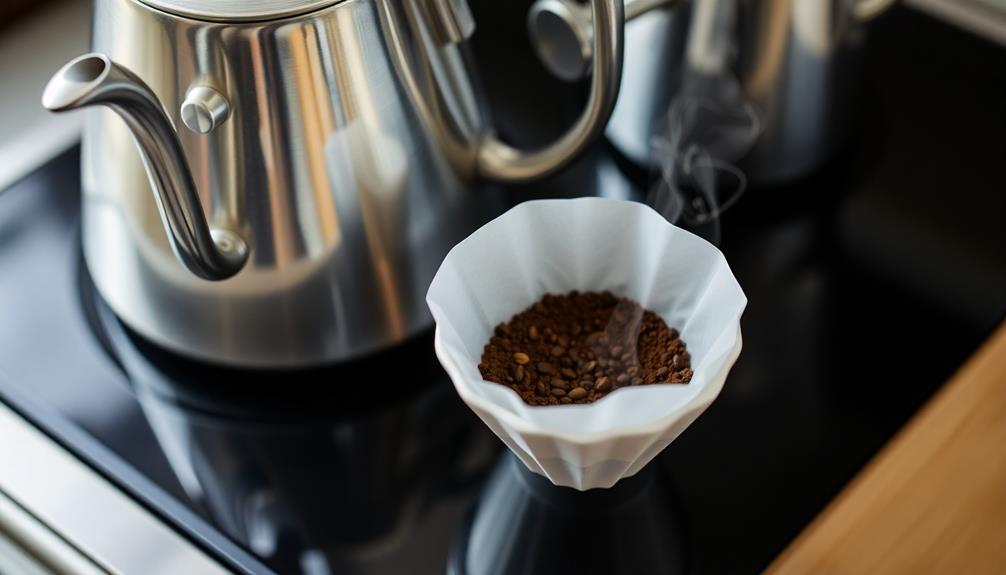
Now that you have the perfect grind, it's time to brew your coffee! Grab your favorite brewing method, whether that's a classic drip machine, a sleek French press, or a pour-over setup.
Fill your kettle with fresh, cold water and bring it to a gentle simmer. While you wait, take a deep breath and inhale the tantalizing aroma of your freshly ground beans.
When the water is ready, carefully pour it over the grounds, letting the coffee bloom and release its rich flavors. Depending on your brewing method, you may need to stir gently or let the coffee steep for a few minutes.
Be patient and let the process unfold – great coffee is worth the wait!
As the final drops drip into your cup, take a sip and savor the balanced, smooth taste. Congratulations, you've just brewed a delectable cup of craft coffee!
Now sit back, relax, and enjoy the fruits of your labor.
Step 4. Adjust Water Temperature and Brew Time
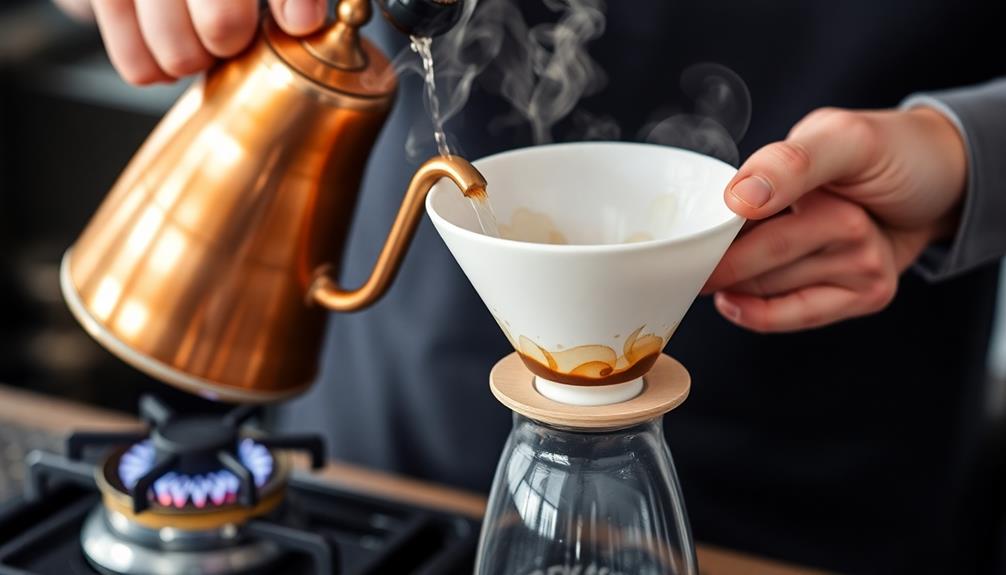
To brew the perfect cup of craft coffee, adjusting the water temperature and brew time is crucial.
You'll want to aim for water that's around 200°F. Any hotter, and you might end up with a bitter, burnt taste. Any cooler, and the coffee will be weak and watery. Get your water to the right temp, then slowly pour it over the freshly ground coffee beans.
The perfect brew time depends on the method you're using, but a general rule is 4-6 minutes.
Any shorter and the flavors won't fully develop. Longer, and you risk over-extraction, which makes the coffee taste sour and unpleasant. Keep an eye on the clock and adjust as needed.
With the right water temp and brew time, you'll create a rich, smooth cup of craft coffee that's bursting with flavor. Enjoy! Whether you’re a seasoned barista or just getting started, each step plays a crucial role in achieving that perfect cup. Just like the kombucha brewing process, precision and patience are key—allowing the flavors to develop and properly balance. With the right care, your coffee will be just as satisfying as the first sip of your favorite homemade kombucha.
Step 5. Enjoy the Freshly Brewed Coffee
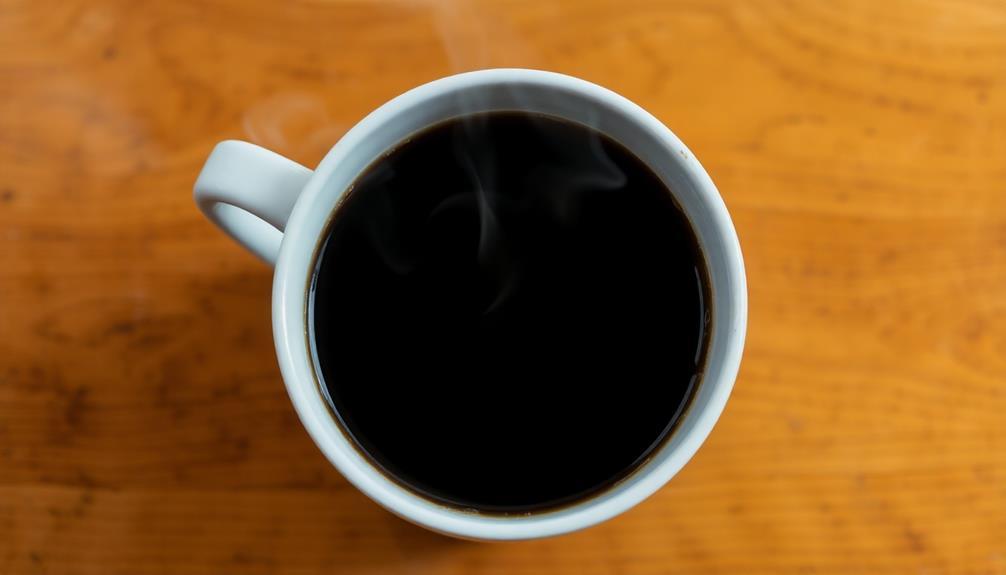
Typically, you'll want to pour the freshly brewed coffee into your favorite mug or cup. The aroma will immediately fill the air, inviting you to take a deep breath and savor the moment.
As you bring the cup to your lips, the warmth radiates through your hands, adding to the cozy experience.
Take a sip and let the bold, complex flavors dance on your tongue. Notice the subtle notes of chocolate, caramel, or even a hint of fruitiness, depending on the coffee beans used. The perfectly extracted brew should have a smooth, velvety mouthfeel, neither too weak nor too bitter.
Enjoy the coffee at your own pace, savoring each sip. You can add a touch of cream or sugar if desired, but try the coffee black first to truly appreciate the craftsmanship.
With each taste, you'll discover new layers of flavor, making every cup a unique and rewarding experience.
Final Thoughts
As we reach the conclusion of our exploration into the world of craft coffee, it's clear that this vibrant industry has much to offer.
From the delightful aroma of freshly-ground beans to the satisfying sip of a perfectly-brewed cup, the joys of craft coffee are truly endless. Whether you're a seasoned coffee connoisseur or just discovering the wonders of this beloved beverage, there's always more to learn and savor.
Craft coffee isn't just about the end result – it's a journey of discovery, where each step, from bean selection to brewing technique, plays a crucial role in creating the ultimate coffee experience.
Frequently Asked Questions
What Is the Best Way to Store Roasted Coffee Beans?
The best way to store roasted coffee beans is to keep them in an airtight container, away from light, heat, and moisture. Avoid storing them in the fridge or freezer, which can lead to condensation and staling.
How Can I Tell if My Coffee Beans Are Fresh?
You can tell if your coffee beans are fresh by their aroma. Fresh beans will have a rich, distinct scent. You can also check the roast date and avoid beans that are more than a few weeks old.
What Is the Difference Between Arabica and Robusta Coffee Beans?
Arabica and Robusta are the two main coffee bean varieties. Arabica beans have a sweeter, more complex flavor, while Robusta beans are more bitter and contain more caffeine. The choice between the two depends on your personal taste preferences.
How Can I Reduce Bitterness in My Homemade Coffee?
To reduce bitterness in your homemade coffee, try using a coarser grind, brewing at a lower temperature, and limiting the brew time. You can also add a pinch of salt or a splash of milk to counteract the bitterness.
What Are the Health Benefits of Drinking Craft Coffee?
Drinking craft coffee can provide several health benefits. It's rich in antioxidants that may reduce inflammation, improve cognitive function, and lower the risk of chronic diseases like type 2 diabetes and certain types of cancer.
